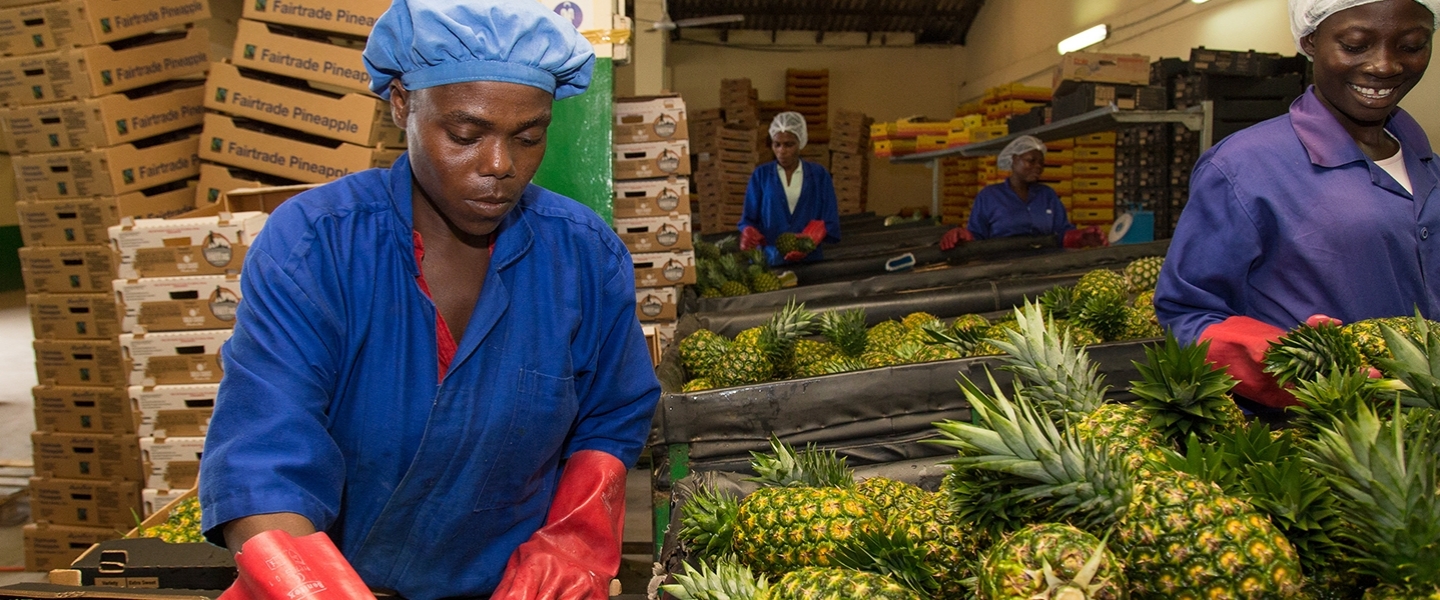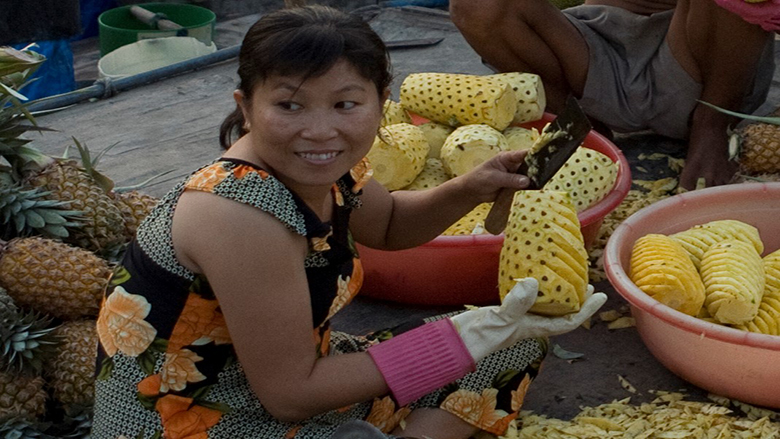In developing countries, the food system employs the majority of people in self and wage employment both on and off the farm. Globally, 65% of poor working adults relied on agriculture for their livelihoods in 2016. According to 2017 data, farming generates about 68 percent of rural income in Africa, and about half of rural income in South Asia.
Changes in diets, rising consumer demand and urbanization, supported by investments in infrastructure and rapidly evolving technology, are creating opportunities in the broader food system—including in manufacturing, marketing, transportation and food preparation. In Africa, food systems accounted for nearly 50 percent of economic activity in 2013 and could create a trillion-dollar food market—and even more jobs-- by 2030.
This is important, especially as 1.6 billion people in low and middle income countries—and 300 million young people in Sub-Saharan Africa alone-- reach working age in the next 15 years. Under current trends, analysis shows that the food system in Ethiopia, Malawi, Mozambique, Tanzania, Uganda and Zambia will provide more than 70% of total jobs in 2025.
To enhance the food system’s contribution to jobs, governments can promote investments in healthier and safer food value chains, ensure that policies and investments do not undermine employment intensity relative to long-term market trends, facilitate the inclusion of women and youth, and improve the quality of jobs.
Four strategies have emerged for providing access to more, better, and inclusive jobs in the food and agriculture system:
- Develop mechanisms for aggregating produce: Small farmers need mechanisms—such as producer organizations, companies or other institutions-- that aggregate their produce to reach scales that help them get better deals in markets.
- Make value chains more inclusive: Empower and engage with different stakeholders along the entire value chain—including women and NGOs—and orient it towards creating more and better jobs, and facilitating enterprises.
- Invest in expanding the Micro-Enterprise and Small and Medium Enterprise ecosystem: Invest in the growth of existing and emerging SMEs
- Engage youth through skills development, vocational education, incubation and digital agriculture: Provide youth with opportunities to develop and enhance their skills in order to help them access agripreneurship opportunities and acquire jobs in agribusiness, off-farm, non-farm, and rural labor markets. Focus should also be put on social enterprises, incubation for youth entrepreneurs and the use of ICT to create digital jobs that provide agriculture services.
Strategy
The World Bank supports rural livelihoods and grows agricultural employment in countries through a combination of investment programs and analytics.
Building institutions for rural poor people: The Bank invests in building community institutions for rural poor people—particularly small farmers and women. Producer companies, farmer organizations, productive alliances and self-help groups (SHGs) enable farmers to aggregate their production, increase productivity of major crops, and gain access to extension and training, credit, financial services and market opportunities. These programs make local government services and markets more accessible to smallholders and communities. They also invest in infrastructure such as roads and telecommunications to lower transaction costs, increase connectivity and raise incomes.
Developing the job ecosystem: The Bank supports the development of off farm and non-farm sector entrepreneurship and job opportunities, particularly for youth. Bank-supported programs build partnerships with local businesses and the private sector to provide job placements, as well as business development, incubation, vocational education and skills development.
Adopting policy and regulatory frameworks to promote food system investments: The Bank also conducts analytical work to identify opportunities for stimulating entrepreneurship and investments to create inclusive growth and rural jobs across the food and agriculture sector. It also evaluates strategies for livelihood development in rural areas, and recommends strategies to enable robust food and agriculture system growth to drive farm and non-farm incomes.
Results
In China since 2017, a rural poverty alleviation project has helped increase income generation opportunities in Guangxi province by providing start-ups with training in marketing and establishing links to markets.
Across South Asia, programs working with millions of small farmers--mostly women--have helped set up producer companies and self-help groups (SHGs), where women can advocate for themselves and their communities. Since 2009, these programs have also enabled small producers to trade on commodity exchanges, trained and placed youth in private sector jobs and provided access to credit and financial services. India’s rural programs have helped organize 30 million women—accounting for 72% of India’s total SHG membership-- into SHGs. Bank-supported empowerment programs also focus on other vulnerable groups, including unskilled youth and disabled people. Nearly 745,000 young Indians have found jobs with the help of rural programs.
Since 2010 in the Democratic Republic of Congo, a project has worked to revitalize agriculture by creating up to 50,000 jobs in rural infrastructure management through private-public partnerships and boosting youth employment through farming support services.
In Mali, the Bank has supported agribusiness entrepreneurs to start processing mangoes, which has created quality jobs for youth and women since 2008. These products are being exported to Europe and have enabled local farmers and entrepreneurs to access global value chains.
Since the early 2000s in Colombia, Brazil, Honduras and seven other countries in Latin America, farmer organizations partnered with the private sector and civil society to set up productive alliances that enable access to expertise, infrastructure, markets and value chains. The productive alliance programs have included more than 122,685 farm households. They have created more jobs for local farmers, particularly youth.
Last Updated: Aug 26, 2021


